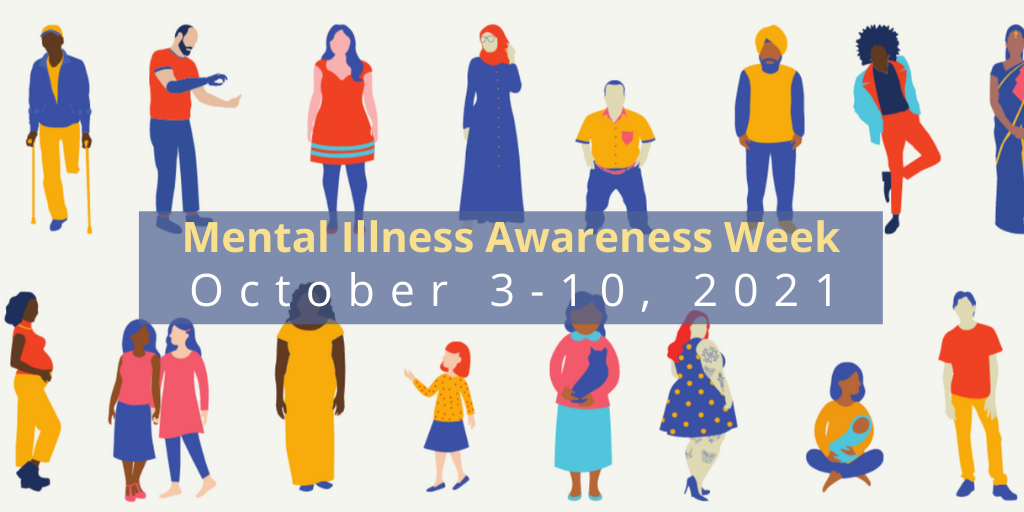
This year for Mental Illness Awareness Week, October 3-10, 2021, we are joining Mental Health America (MHA) to raise awareness of mental health conditions that are often misunderstood. MHA created this theme after listening to our community, where many felt that their diagnoses weren’t at the forefront of the mental health conversation.
These conditions include Obsessive-Compulsive Disorder (OCD), Attention-Deficit/Hyperactivity Disorder (ADHD), Borderline Personality Disorder (BPD), Seasonal Affective Disorder (SAD), Dissociative Disorders, Paranoia and Delusional Disorders, and other conditions that don’t fit into specific diagnoses – known as Not Otherwise Specified (NOS).
The week culminates in World Mental Health Day on October 10. This year’s theme, Mental health care for all: let’s make it a reality, offers an opportunity for our global community to reflect on how we can make mental health services and resources accessible to all.
At Mental Health Minnesota, we have free, accessible resources available to help children, families and adults get support for any mental health concern or diagnosis before #B4Stage4 or before a crisis:
- Minnesota Warmline – Certified Peer Support Specialists offer free support to anyone struggling with mental health concerns
- Mental Health Helpline – mental health resource, information and local provider referrals
- 833-HERE4MN – licensed mental health providers offer free support to anyone struggling during the pandemic
Obsessive-Compulsive Disorder (OCD)
PRESENCE OF OBSESSIONS:
- Common obsessions include: contamination, losing control, physical harm, symmetry, unwanted sexual thoughts
- Intrusive and unwanted thoughts, urges, or images that a person can’t stop thinking about
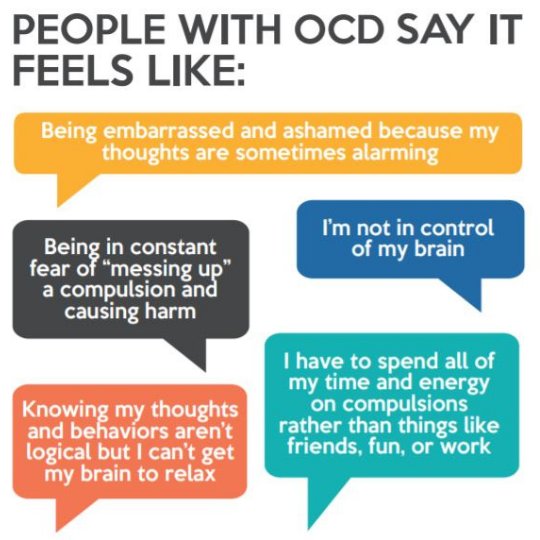
PRESENCE OF COMPULSIONS:
- Repetitive behaviors or mental acts that a person feels driven to do, either to reduce an obsession or according to rigid rules
- Common compulsions include: washing and cleaning, checking, repeating, counting, reciting a word or phrase
DISRUPTION:
- Thoughts and/or behaviors associated with OCD are time-consuming and interfere with daily life
RELATED DISORDERS INCLUDE:
- Body dysmorphic disorder
- Hoarding disorder
- Trichotillomania (hair-pulling)
- Excoriation (skin-picking)
Attention-Deficit/Hyperactivity Disorder (ADHD)
SIGNS AND SYMPTOMS OF ADHD
People who have ADHD may have all or some of the following signs and symptoms:
In Children:
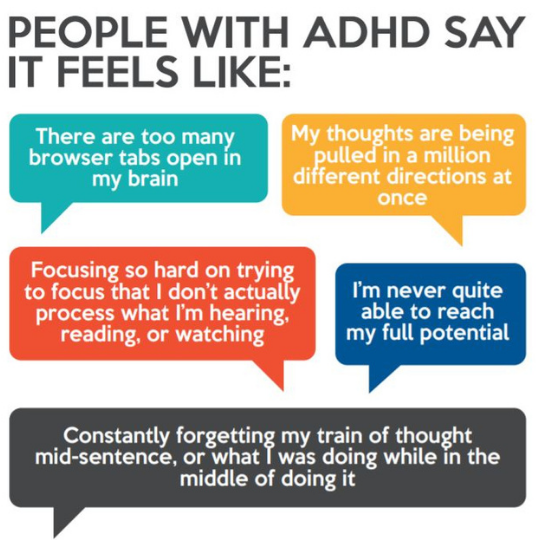
- Inattention
- Difficulty following instructions
- Difficulty focusing on tasks
- Frequently losing or misplacing things at school and home
- Forgetfulness
- Easily distracted or has difficulty listening
- Lacking attention to detail or making careless mistakes
- Disorganization
- Often does not complete homework or tasks
- Hyperactivity-Impulsivity
- Is fidgety
- Runs or climbs inappropriately
- Talks excessively
- Difficulty playing quietly
- Always on the go
- Blurts out answers
- Has trouble waiting their turn
- Often interrupts
In adults:
- Distractibility
- Disorganization
- Forgetfulness
- Procrastination
- Chronic lateness
- Chronic boredom
- Anxiety
- Depression
- Low self-esteem
- Mood swings
- Employment problems
- Restlessness
- Substance abuse or addictions
- Relationship problems
- Rejection sensitive dysphoria (RSD)
Borderline Personality Disorder (BPD)
SIGNS AND SYMPTOMS OF BPD
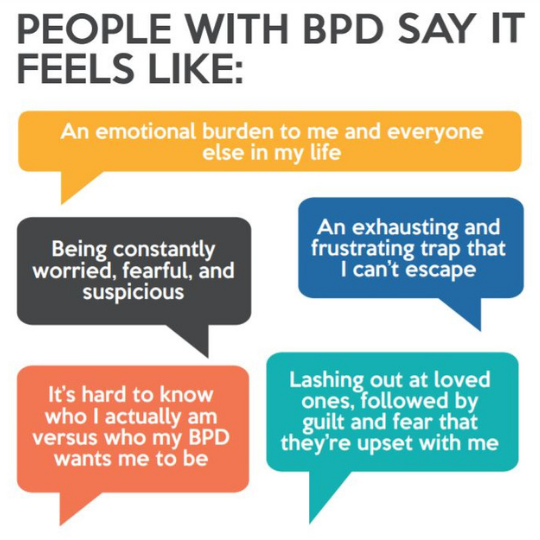
- Frantic efforts to avoid real or perceived abandonment
- Intense mood swings lasting hours or days
- Impulsivity and/or risky behavior
- Unstable intense relationships
- Self-injurious or suicidal threats or behaviors
- Acts of self-sabotage
- Chronic feelings of emptiness
- Inappropriate, intense anger and rage
- Unstable sense of self, including changing goals and values
- Dissociation and feelings of detachment
- Trouble trusting others
Disassociative Disorders
SIGNS AND SYMPTOMS OF DISASSOCIATIVE DISORDERS
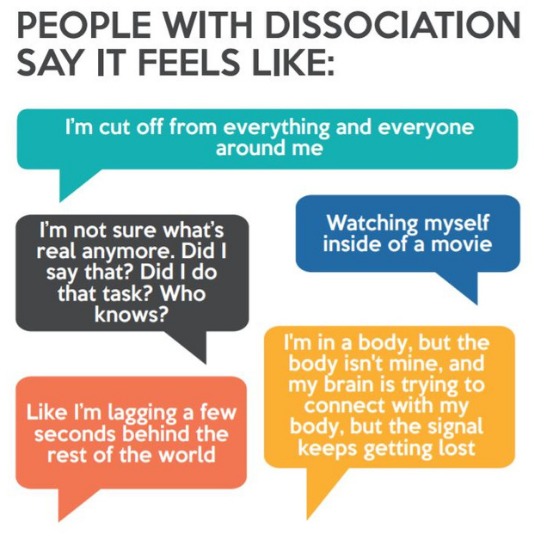
- Out-of-body experiences
- Feeling like you’re a different person sometimes
- Feeling emotionally numb or detached
- Having an altered sense of time
- Trouble remembering personal details
- Forgetfulness about things you’ve said or done
TYPES OF DISASSOCIATIVE DISORDERS
- Dissociative Identity Disorder
- Dissociative Amnesia
- Depersonalization/ Derealization Disorder
- Other Specified Dissociative Disorder
- Unspecified Dissociative Disorder
Paranoia and Delusion
SIGNS AND SYMPTOMS OF PARANOIA AND DELUSIONS
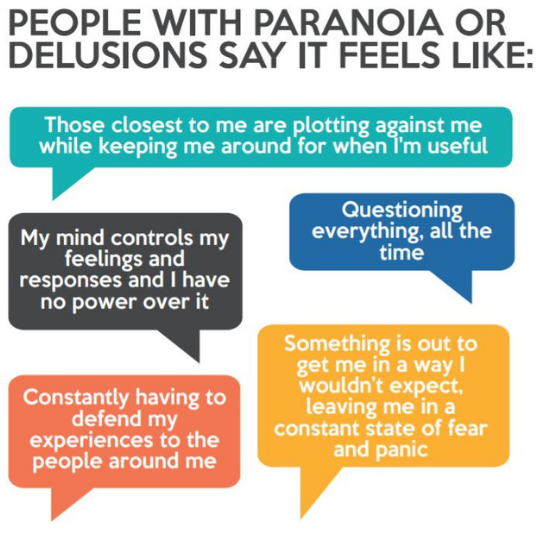
When a person has paranoia or delusions, but no other symptoms (like hearing or seeing things that aren’t there), they might have what is called a delusional disorder. Because only thoughts are impacted, a person with delusional disorder can usually work and function in everyday life, however, their lives may be limited and isolated.
People who have delusional disorder may have all or some of the following signs and
symptoms:
- Intense and irrational mistrust or suspicion
- Hypervigilance
- Difficulty with forgiveness
- Defensive attitude in response to imagined criticism
- Preoccupation with hidden motives
- Fear of being deceived or taken advantage of
- Inability to relax
- Being argumentative
Seasonal Affective Disorder (SAD)
SIGNS AND SYMPTOMS OF SAD
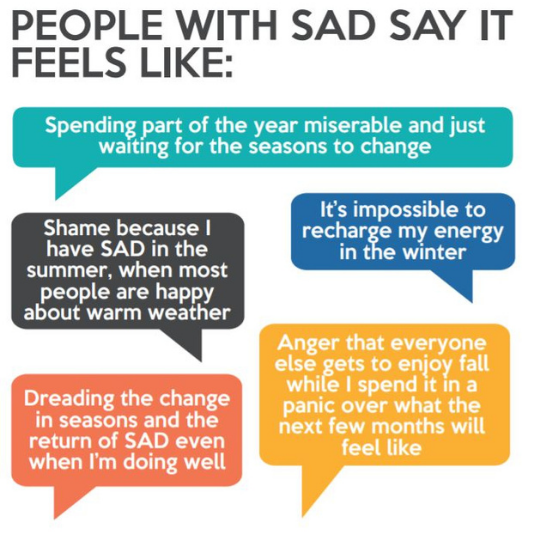
- DEPRESSION: Misery, guilt, loss of self-esteem, hopelessness, diminished interest in activities, despair, and apathy
- ANXIETY: Tension and inability to tolerate stress
- MOOD CHANGES: Extremes of mood and, in some, periods of mania in spring and summer
- SLEEP PROBLEMS: Oversleeping and difficulty staying awake or, sometimes, disturbed sleep and early morning waking
- LETHARGY: Fatigue and inability to carry out normal routines
- OVEREATING: Cravings for starchy and sweet foods resulting in weight gain
- SOCIAL PROBLEMS: Irritability and desire to avoid social contact
- SEXUAL PROBLEMS: Loss of libido and decreased interest in physical contact